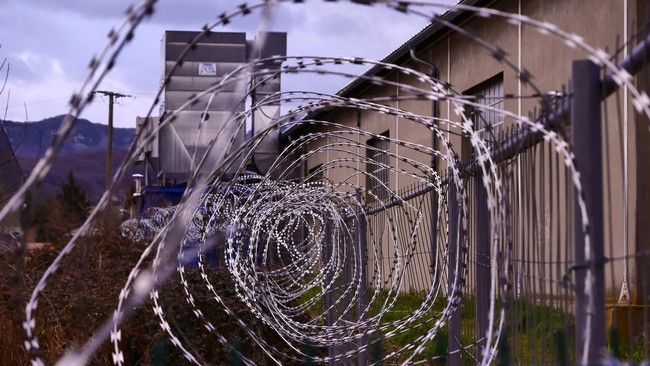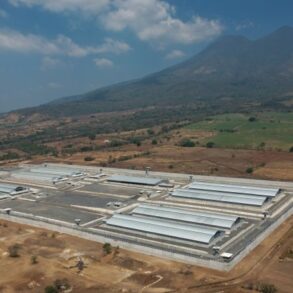
In a poignant reminder of the lengths individuals will go to in order to avoid imprisonment, a video recently went viral showing a man escaping police custody from a Johannesburg court.
Arrested for housebreaking and theft, the daring escape demonstrated the fear and desperation surrounding the prospect of living behind bars.
This incident has sparked renewed interest in the global prison systems, highlighting the stark differences in experiences for inmates around the world.
RUN: Suspect escapes from a Johannesburg Court.
He was arrested for housebreaking and theft.#CrimeWatch pic.twitter.com/F99BD6p1F9— Yusuf Abramjee (@Abramjee) February 19, 2025
The ongoing discourse around prisons has intensified, especially following reports of a controversial deal between the Trump administration and the president of El Salvador, allowing the US to deport detained migrants and imprisoned criminals to a mega prison in the Central American nation.
The implications of such policies cast a long shadow over the already volatile landscape of global incarceration.
For many, life behind bars evokes fascination, often stemming from a mix of fear, curiosity, and condemnation.
Netflix’s documentary series “Inside the World’s Toughest Prisons”, hosted by investigative journalists Paul Connolly and Raphael Rowe, reveals the brutal world of imprisonment.
Their audacious commitment to becoming voluntary inmates allows viewers to witness the extreme conditions that prisoners face.
Since its debut in 2016, the show, now in its seventh season, reflects a growing audience captivated by the harsh realities of incarceration.
Prisons, whether referred to as jails, gaols, correctional facilities, or detention centres, serve as institutions where individuals are held under state authority, typically as punishment for various crimes.
However, the operational standards vary dramatically from one facility to the next. Some prisons focus on rehabilitation, offering inmates the chance to reform and reintegrate into society, while others revel in the punitive aspects of incarceration.
Below are examples of some of the best and worst prison facilities around the globe, highlighting the disparity in prison conditions.
Worst prisons around the world
Muhanga Correctional Facility, Rwanda: This facility has earned a negative reputation due to extreme overcrowding and appalling living conditions.
Built for a limited number of inmates, it now houses several times that capacity, leading to unsanitary conditions, inadequate medical care, and a lack of basic necessities such as food and clean water.
Reports of physical abuse compound the misery, making it one of the worst prisons globally.
Guantanamo Bay Detention Camp, Cuba: Infamous for its indefinite detentions and inhumane treatment of detainees, this facility operates outside the protections of US law, leaving many held for years without trial or charge.
Reports of torture techniques, such as waterboarding and sleep deprivation, have drawn sharp criticism from human rights advocates, making Guantanamo a contentious symbol of the war on terror.
Ciudad Barrios Prison, El Salvador: Dominated by gang activity, notably MS-13, this overcrowded prison experiences rampant violence and extortion from inmates.
Basic necessities are scarce, leading to severe health problems due to malnutrition and inadequate medical care. The facility’s lawlessness highlights significant challenges within El Salvador’s penal system.
Best prisons around the world
Cebu Prison, Philippines: Renowned for its successful rehabilitation programmes, Cebu Prison gained international attention for its choreographed dance performances.
Such activities not only promote discipline and teamwork but also support inmates’ mental well-being.
The focus on vocational training enables inmates to acquire valuable skills, drastically reducing recidivism rates post-release.
Bastoy Bay, Norway: Often hailed as one of the best correctional facilities globally, Bastoy operates as a self-sufficient community allowing inmates to engage in farming, fishing, and maintenance work.
This humane approach prioritises education and therapy, preparing inmates for successful reintegration while significantly reducing reoffending rates.
Aranjuez Prison, Spain: Notably family-friendly, Aranjuez allows inmates to live with their children in special units, preserving family bonds during incarceration.
Educational and childcare programmes ensure that children continue to flourish while their parents serve their sentences, thus promoting rehabilitation and enhancing post-release integration prospects.
The disparities in prison experiences across the globe raise pressing questions about the future of criminal justice systems.
The fear of imprisonment, illustrated by recent events in Johannesburg and the ongoing scrutiny over facilities like Guantanamo Bay, compel us to reflect on how societies allocate their approach to rehabilitation versus punishment.
What is clear is that the need for reform continues to echo worldwide.
This post was originally published on this site be sure to check out more of their content.






